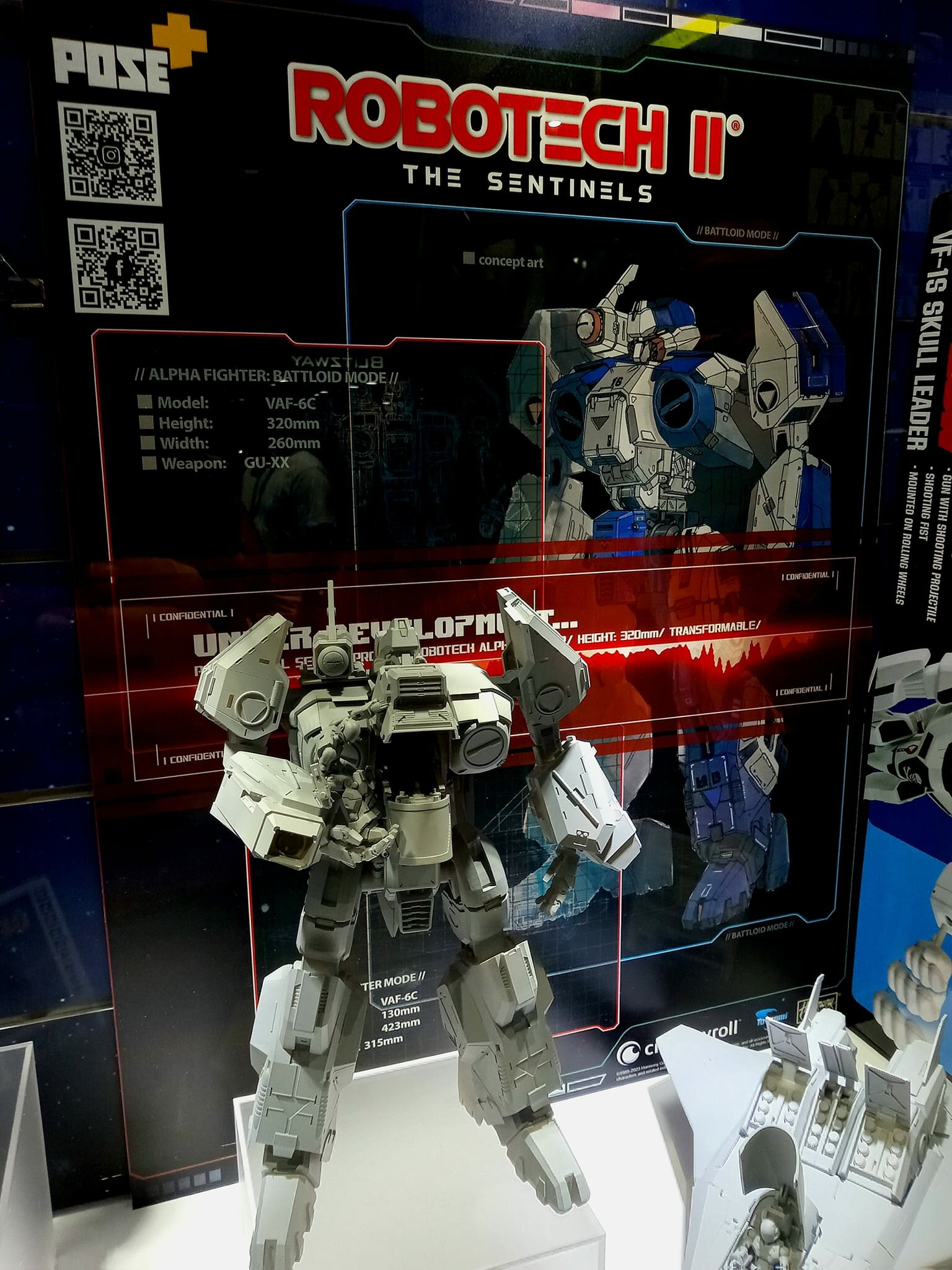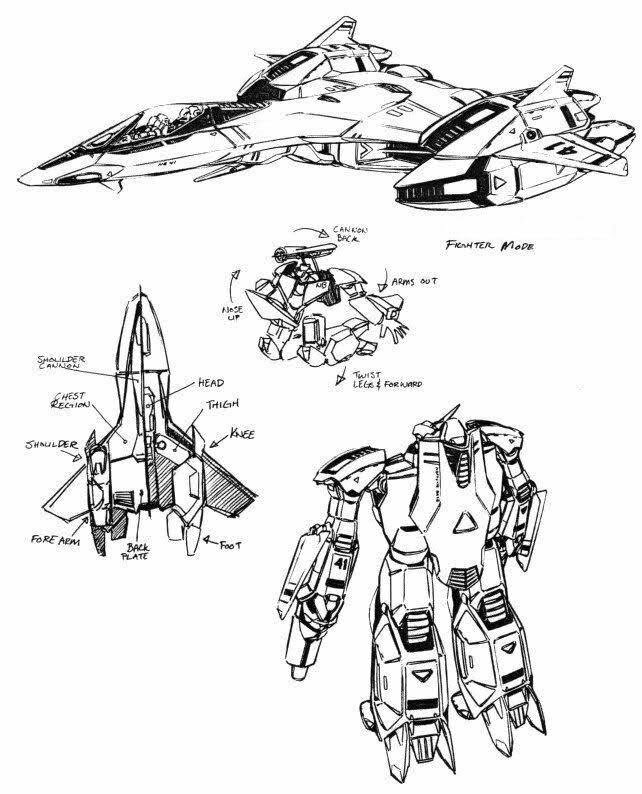-
Posts
5316 -
Joined
-
Last visited
Content Type
Profiles
Forums
Events
Gallery
Posts posted by Knight26
-
-
That is looking sick so far, love it.
-
On 9/12/2023 at 1:01 AM, Graham said:
Hmm.......given the rumors about the pending launch of the Switch 2, which have been circulating on social media in the last week or two, I'm wondering if I should hold off on pre-ordering Macross Shooting Insite for the Switch? At least until there is more information about whether Switch games will be backwards compatible with the Switch 2, which as far as I know has not yet been confirmed.
I mean it's not a big issue for me about being able to play Macross Shooting Insite. I already have the Japanese version of Macross Shooting Insite pre-ordered for the PS4 and I'll also get the international version for the PS4, so I can still play it on my PS4 at home.
But, at least until I heard the news about the Switch 2, I was planning to buy a Switch OLED, mainly for playing Macross Shooting Insight while commuting to and from work and also for playing some air combat games while commuting also.
But if it turns out that Switch games are not compatible with the Switch 2, effectively rendering the Switch a dead platform, I'm now having second thoughts about buying it.
The little I have heard about Switch 2 is that backwards compatibility will be baked in and that it will feature DLSS upscaling for older titles. So maybe getting MSI is still valid given that it will get an automatic 4k upscale on Switch 2.
That being said I will get it on steam after the mod community to circumvent HG having its head up its ass and push SDF and DYRL characters and valks into the english release. -
6 hours ago, twich said:
It looks rather large, what scale are you aiming for? This is great work! I wish I had the money, time and ability to print and build something like this! Can’t wait for more updates!
Twich
I'm guessing 1:48 based on the ejection seat and cockpit.
-
While I appreciate all the random cartoon characters that Super7 is making figures of, I don't care for the figures in general. The cartoonish proportions, features, and limited articulation are kind of a turn-off to me—especially the limited articulation.
-
This is looking awesome
-
1 hour ago, Seto Kaiba said:
I have to admit, the more I read of Variable Fighter Master File: VF-22 Sturmvogel II, the more I'm convinced I've done the book a disservice by describing it as one of the less-good installments of the series. It's got quite a bit of good material, it's just the original variants are largely stupid.
The section on the VF-22's cockpit makes it sound like the YF-21 prototype would've been an absolutely miserable aircraft to operate. It describes the original BCS control system as having such tight tolerances that the pilot was basically not allowed to move at all. We're talking way beyond normal levels of restraints, to the point of immobilizing the pilot's entire body via a Houdini-like system of restraint straps and clamps in normal operation. All of that was in service of keeping the EEG sensor hood from shifting, since moving as little as 10mm from its ideal position would cause the system to lose 40% or more of its accuracy and send the aircraft to emergency recovery mode. The connected Brain Direct Image system required measures nearly as severe, basically requiring the pilot to fly with their eyes closed and wearing sound-damping headphones. The description of the Sync Pod chair that grips the pilot's entire body instead of using conventional restraints sounds uncomfortable as hell too.
There's also a mention that the pilot suit also includes a version of the metabolic booster system that's the only mentioned feature of the VF-15, which uses lasers, electromagnetic fields, etc. to stimulate the body's metabolic stress responses as an anti-g measure. It's said that it can provide the wearer with the endurance to temporarily handle g-force load of +20 for nearly three minutes. The same system is also used for life support, slowing the pilot's life processes down in the event of an emergency escape of the aircraft to allow the pilot to survive up to 70 days in space.
What's interesting about that is the measures they went to to not use an implanted Brain Direct Interface. It points to the UNS prohibition, or just inhibition towards, cybernetics coming sooner than has been previously mentioned. A direct implanted interface might have solved many of those issues. Heck, I always assumed that Guld's earrings were somehow a part of the BDI interface. Otherwise, he did not seem like the type to get piercings. But the prohibition against moving also explains his posture when flying. He basically would get into a meditation pose/state and fought to keep in it at all times, especially under high-G load. That could also explain why he couldn't regain control of the YF-21 after his emotional outburst towards Isamu, his calm was disturbed and he'd shifted around too much, reaching for the manual controls just exacerbated the problem. Once Isamu had the YF-21 stabilized he was able to regain control, though his random impulsive thoughts did nearly kill Isamu just the same.
-
341 pieces, dang hope you are also putting together some robust instructions. Looking awesome though.
-
9 hours ago, pengbuzz said:
(Yes, this is a necropost)
If you think about it though: it would certainly save wear on the canon mount motors to simply let the guns hang down rather than constantly trying to fight Earth's gravity,
Not really. You wouldn't want free-spinning gears going while your ship is lifting off. Besides that, due to their size, they would most likely be on a hydraulic system with multiple locks to keep the cannons in their stowed position. Smaller turrets would, for sure, be moved electronically, but then they would likely be held in place with fail-safe brakes, like on big trucks, that lock when power is removed.
-
Amazing wrok so far, can't wait to see the final product.
-
-
8 hours ago, twich said:
did someone get hungry and eat part of the wing of your VF-1 Double Strike? For a minute there I thought it was Xegfried posting one of the 1/60 VF-9 kits that he designed and thought maybe he went for a VF-1 and Legioss/Tread too, but then I saw the tell-tale 3D printer lines and then really looked at it. I think that those designs are cool. 3D printing is party witchcraft and part voodoo and too much of a rich man's game
Twich
No, I just didn't support that wing properly but I decided to keep it. One of these days I will snip the bad bit off and reprint that wing to fix it.
As for it being a rich man's game. I would say false to that. Good Consumer-grade printers are getting less expensive all the time. You can get nice results with an Ender-3 and they cost less than most Valkyrie toys. -
 Micheal Ryan's new Legioss and Tread prints are awesome. I am debating upscaling the docked Tread to 1:48 and seeing if the Riobot will dock to it.
Micheal Ryan's new Legioss and Tread prints are awesome. I am debating upscaling the docked Tread to 1:48 and seeing if the Riobot will dock to it.
-
These look awesome, do you plan to sell/release the STLs? Or are you going produce them yourself for sale?
-
This is cool, are you designing your own VF to build as a toy or 3D print?
-
That should be badass
-
While all the details are nice, the thickness just doesn't sit right with me. Nor do I like the narrow back plate (between the engines) the collapsing nacelles are interesting but need to see more pictures all around to make a good judgement. Still prefering the small legged Yamato at this point.
-
Aside from the color I can't tell the differences, are there any?
-
4 hours ago, Seto Kaiba said:
Given what's been said previously, the SDFM and DYRL portion appears to be a DLC... they may simply leave that particular DLC option unavailable to US gamers.
Until someone hacks it onto moddb
-
SO how does the HG/BW deal affect the release of this? Will be able to get it internationally given all the SDF and DYRL characters and designs?
-
None of this artwork feels real to me. The SDF-1 is always at some odd angle, bits blended together and it is never shown in robot mode, then the fighters, just terrible, again no battroid mode and the fighters are horrid kitbashes. It stinks of AI art or bad fan art.
-
-
36 minutes ago, Seto Kaiba said:
Indirectly, yes.
They have to periodically release some SDF Macross-based merchandise in order to meet the US Patent and Trademark Office's requirements to renew the trademark they have on the word "Macross". If they lose that trademark, the 2021 distribution agreement is essentially meaningless. Big West would be able to release the Macross sequels in the US without any cooperation from, or royalties paid to, HG and they could even register that trademark themselves and forcibly shut HG out of marketing Robotech in the US.
I figured that something like that had to be happening given their periodic releases.
-
That begs the question; if Funimation is now managing HGs RT franchise how much freedom do they have to approach BW and start properly importing Macross (more so then the trickle of WWR VFs)? Especially now that FA has passed.
-




.jpeg.ed93ad80c90974f95ab036c05f1bb3a3.jpeg)
.jpeg.58acbc6e1cde503cf52ec43f4efe2a1f.jpeg)

Mospeada
in Anime or Science Fiction
Posted
I am curious to see it in other modes. Though, that RT-II badging still confuses me. Are they planning to relaunch that concept?